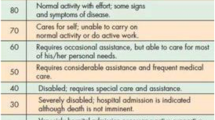Abstract
Mucopolysaccharidosis I Hurler (MPS IH) is a progressive multisystemic disorder caused by alpha-L-iduronidase deficiency. First choice of treatment in MPS IH children is haematopoietic stem cell transplantation (HSCT). The effect of HSCT has been shown to have limited influence on skeletal manifestations by poor penetration of musculoskeletal tissues by the enzyme derived from donor leucocytes. Aim of this study was to investigate the effect of HSCT on the craniocervical junction (CCJ) in Hurler patients. We analysed retrospectively sequential magnetic resonance imaging (MRI) scans of 30 patients with Hurler disease treated by HSCT since 1982 at the Royal Manchester Children’s Hospital, UK, in order to determine whether the patients suffer from dens hypoplasia. Results were compared with biochemical and clinical characteristics: Enzyme activity (EA), chimerism, urinary glycosaminoglycan (GAG) excretion and neurological status. Investigations were part of standard clinical procedures. Results are descriptive in presentation. In 26/30 patients a determination of odontoid hypoplasia was feasible. The majority showed a normal dens length and an increase with age. Only 3/26 revealed a dens hypoplasia. One of them had only partial donor engraftment (DE) with reduced EA, one of them suffered from chronic graft versus host disease (GVHD). One patient with only partial DE and reduced EA presented with initial dens hypoplasia until preadolescence but normalized later on. There may be a trend towards lower EA and the occurrence of DH in transplanted MPS patients - perhaps the dosage of enzyme plays a role in the correction of skeletal complications in this patient group. HSCT patients with incomplete DE and therefore lower EAs may require special attention and care.



Similar content being viewed by others
Abbreviations
- MPS:
-
Mucopolysaccharidosis
- H:
-
Hurler
- HSCT:
-
Haematopoietic stem cell transplantation
- GAG:
-
Glycosaminoglycan
- CCJ:
-
Craniocervical junction
- MRI:
-
Magnetic resonance imaging
- GVHD:
-
Graft versus host disease
- ERT:
-
Enzyme replacement therapy
- DE:
-
Donor engraftment
- EA:
-
Enzyme activity
- DS:
-
Dermatan sulphate
- CS:
-
Chondroitin sulphate
- MMC:
-
Myelomalacia
References
Aldenhoven M, Boelens JJ, de Koning TJ (2008) The clinical outcome of Hurler syndrome after stem cell transplantation. Biol Blood Marrow Transplant 14:485–498
Cokluk C, Aydin K, Rakunt C, Iyigun O, Onder A (2006) The borders of the odontoid process of C2 in adults and in children including the estimation of odontoid/body ratio. Eur Spine J 15:278–282
Cox-Brinkman J, Boelens JJ, Wraith JE et al (2006) Haematopoietic cell transplantation (HCT) in combination with enzyme replacement therapy (ERT) in patients with Hurler syndrome. Bone Marrow Transplant 38:17–21
Elliott S (1988) The odontoid process in children – is it hypoplastic? Clin Radiol 39:391–393
Field RE, Buchanan JA, Copplemans MG, Aichroth PM (1994) Bone-marrow transplantation in Hurler’s syndrome effect on skeletal development. J Bone Joint Surg Br 76:975–981
Guffon N, Souillet G, Maire I, Straczek J, Guibaud P (1998) Follow-up of nine patients with Hurler syndrome after bone marrow transplantation. J Pediatr 133:119–125
Hite SH, Peters C, Krivit W (2000) Correction of odontoid dysplasia following bone-marrow transplantation and engraftment (in Hurler syndrome MPS 1H). Pediatr Radiol 30:464–470
Khanna G, Van Heest AE, Agel J et al (2007) Analysis of factors affecting development of carpal tunnel syndrome in patients with Hurler syndrome after hematopoietic cell transplantation. Bone Marrow Transplant 39:331–334
Kirks DR (1984) Practical Pediatric Imaging. Little, Brown, Boston
Malm G, Gustafsson B, Berglund G et al (2008) Outcome in six children with mucopolysaccharidosis type IH, Hurler syndrome, after haematopeietic stem cell transplantation (HSCT). Acta Paediatr 97:1108–1112
McManners T (1983) Odontoid Hypoplasia. Br J Radiol 56:907–910
Muenzer J, Wraith JE, Clarke LA (2009) International consensus panel on management and treatment of Mucopolysaccharidosis I: management and treatment guidelines. Pediatrics 123:19–29
Neufeld EF, Muenzer J (2001) The mucopolysaccharidoses. In: Scriver CR, Beaudet AL, Sly WS et al (eds) The metabolic and molecular bases of inherited diseases. McGraw-Hill, New York, p 3421–3452
Pastores GM, Arn P, Beck M, Clarke JT et al (2007) The MPS I registry: design, methodology, and early findings of a global disease registry for monitoring patients with Mucopolysaccharidosis type I. Mol Genet Metab 91:37–47
Perovic MN, Kopits SE, Thompson RC (1973) Radiological evaluation of the spinal cord in congenital atlanto-axial dislocation. Radiology 109:713–716
Peters C, Steward CG, National Marrow Donor Program; International Bone Marrow Transplant Registry: Working Party on Inborn Errors, European Bone Marrow Transplant Group (2003) Hematopoietic cell transplantation for inherited metabolic diseases: an overview of outcomes and practice guidelines. Bone Marrow Transplant 31:229–239
Skeletal Dysplasia Group (1989) Instability of the upper cervical spine. Arch Dis Child 64:283–288
Smoker WR, Khanna G (2008) Imaging the craniocervical junction. Child Nerv Syst 24:1123–1145
Staba SL, Escolar ML, Poe M et al (2004) Cord-blood transplants from unrelated donors in patients with Hurler´s syndrome. N Engl J Med 350:1960–1969
Tandon V, Williamson JB, Cowie RA, Wraith JE (1996) Spinal problems in mucopolysaccharidosis I (Hurler syndrome). J Bone Joint Surg Br 78:938–944
Tsukimura T, Tajima Y, Kawashima I et al (2008) Uptake of a recombinant human alpha-L-iduronidase (Iaroidase) by cultured fibroblasts and osteoblasts. Biol Pharm Bull 31:1691–1965
Weisstein JS, Delgado E, Steinbach LS, Hart K, Packman S (2004) Musculoskeletal manifestations of Hurler syndrome: long-term follow-up after bone marrow transplantation. J Pediatr Orthop 24:97–101
Details of funding
The study is sponsored by an independent educational grant by the Deutsche Forschungsgesellschaft (DFG).
Author information
Authors and Affiliations
Corresponding author
Additional information
Communicated by: Frits Wijburg
Competing interest: None declared.
Rights and permissions
About this article
Cite this article
Miebach, E., Church, H., Cooper, A. et al. The craniocervical junction following successful haematopoietic stem cell transplantation for mucopolysaccharidosis type I H (Hurler syndrome). J Inherit Metab Dis 34, 755–761 (2011). https://doi.org/10.1007/s10545-011-9309-5
Received:
Revised:
Accepted:
Published:
Issue Date:
DOI: https://doi.org/10.1007/s10545-011-9309-5




